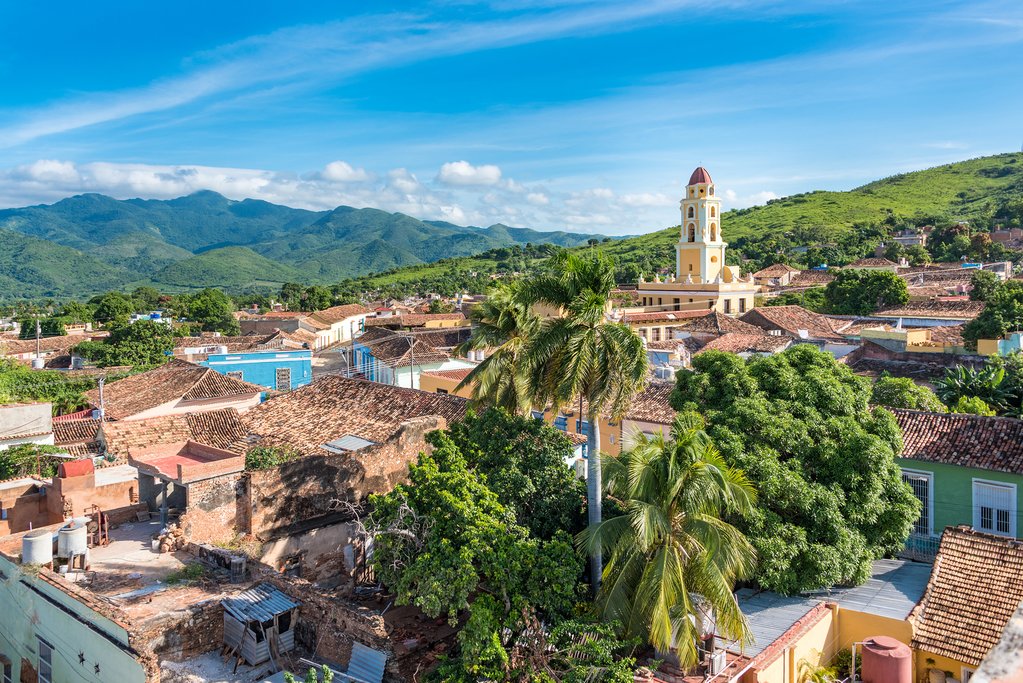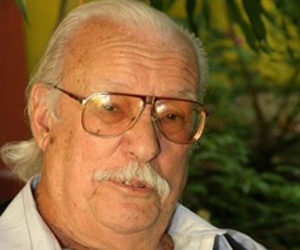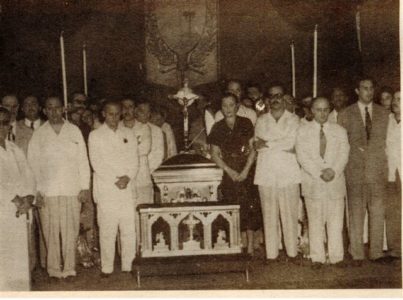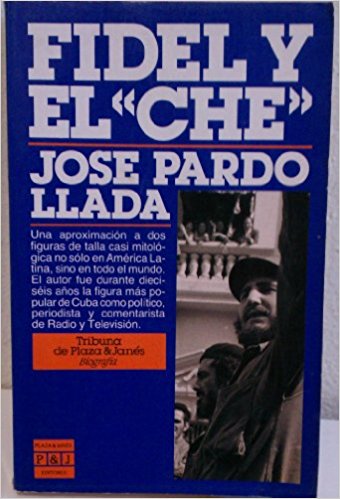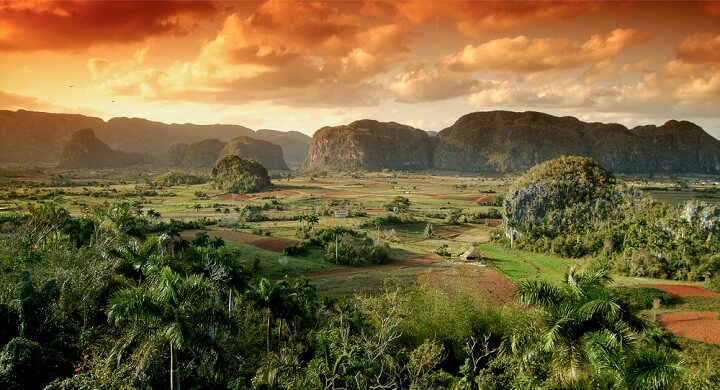JOSÉ PARDO LLADA, RADIO COMMENTATOR, ACTIVIST REVOLUTIONARY, AMBASSADOR, AND POLITICIAN
José Pardo Llada was the most listened-to Cuban journalist and radio commentator in Cuba in the 1940s and 1950s. A partner in the Cuban Revolution along with Fidel Castro, he later abandoned the revolutionary process and went into exile in Colombia for 47 years. He was the most influential radio commentator in the Republic of Cuba and was also considered one of the main figures of Colombian regional journalism.
Born in Sagua la Grande, the old province of Las Villas, on July 27, 1023, he studied at the Sacred Heart of Jesus School, run by the Jesuits in his hometown. Years later, his father, who was a teacher, sent him to Havana to study law at the University of Havana. However, these studies were not concluded and he began to dabble in journalism.
He became known after 1944 when CMK radio was commenting on a hurricane in Havana for three days without a break. “They were three days talking non-stop, drinking coffee only with milk,” recalled journalist Max Lesnik.
He was also a columnist for the Bohemia National Journal magazine and newspaper. He harshly criticized the corruption in the government of Ramón Grau San Martín (1944-1948), which gave him great popularity. Soon his Word paper Word space, broadcast on Radio Union, reached the highest ratings. From the late 1940s to the early 1950s, Pardo Llada was the most listened-to radio program in Cuba.
From an early age, he ventured into Cuban national radio and quickly stood out for his critical sense of the governments of the day. He was elected by large vote to the House of Representatives, after the military coup of Fulgencio Batista, on March 10, 1952, he was not able to undertake a frontal fight against tyranny and thus undermined the popularity he enjoyed at that time in the population. At the end of the revolutionary struggle, he joined the insurrectionary movement.
JOSE PARDO AND EDUARDO CHIBAS
He was an expert in politics and journalism, and a close friend of Eduardo Chibás (1901-1951), leader of the Cuban People’s Party (Orthodox), candidate for the Presidency of Cuba. In the 1950 elections, Pardo managed to be elected to the House of Representatives by the Orthodox Party, reaching the highest number of votes for a candidate for the Cuban Parliament during the Republic, with 71,872 votes. This fact has been recognized by Fidel Castro in interviews with Ignacio Ramonet. Chibás committed suicide in 1951, during his Sunday radio show, and felt discredited for not having brought a formal accusation against a minister in Carlos Prio’s government. Pardo was one of the speakers at the funeral.
At this time, Pardo befriended Fidel Castro. He often had lunch at Pardo’s house in the Vedado neighborhood. On one of these occasions, Pardo’s wife arrived, María Luisa Alonso was in labor, and it was her Fidel who took her to the hospital where she gave birth to Luisa María Bernadette.
After Fulgencio Batista’s coup on March 10, 1952, Pardo criticized the new regime on his popular radio programs. In response, his “word” was suspended 42 times and Pardo himself was arrested 27 times. However, he advocated a peaceful way of fighting against Batista.
After the triumph of the Revolution on January 1, 1959, Pardo threw himself into supporting the new government on the radio. He conducted a daily radio show at 1 pm, from January 1959 to March 1961 in Pardo. He was noticed for his anti-Americanism. He punished the policy of the United States towards the Cuban revolution, the United States accused of blowing up the Maine, to prevent Mambí’s triumph in the War of 95 with his first American intervention in Cuba. He criticized them for his hostile position to the presidential candidacy of Bartolomé Maso in the first elections held in Cuba in 1902. He attacked the American journalist Jules Dubois, a critic of the revolution.
FIDEL CASTRO AND NIKITA KRUSHEV
Qualified with the severest epithets to anyone who was considered a traitor to the revolution. And when one of the speeches by Fidel’s people shouted “Fidel, tremble,” with the intention of getting rid of those who were not so drastic, Pardo supported the phrase.
However, Pardo was seriously affected by the situation in which he found himself.
On the one hand, he fiercely supported the revolution but did not like the turn he was taking toward communism. On his trip to the Soviet Union in November 1960, he collided with the reality of life in a communist country. He later states in an interview with a Cuban journalist in 1988: “The moment I decide to leave I have a dominant position. Castro had distinguished me. Returning from a trip to the Soviet Union in November 1960, I made some criticisms because, among other things, he surprised me that a liter of milk is the equivalent of a dollar. That cost me a reproach from some old communists. Although I must honestly say that many of them had good relationships, especially with Carlos. Rafael Rodríguez. I mention this without bitterness, as happened many years ago. ”
He was a critic of the American journalist Jules Dubois, one of the first to start the propaganda campaign against the nascent Revolution. He referred to him as the man with the “hairy ear.” He went out of his way to appear in a photograph alongside Fidel Castro and Nikita Khrushchev at the United Nations in 1960.
In 1960, he insulted the then Spanish ambassador to Cuba, Juan Pablo Lojendio, for the marked anti-Cuban position shown by the diplomat, to the extent that in November of that year, when he passed the Madrid airport of Barajas, heading to the Soviet Union, Mr. Lejondio, tried to physically attack him.
He described with the harshest epithets anyone who betrayed the revolutionary process. When the people asked Fidel to shake the bush, referring to the opportunists and careerists who had joined the revolutionary bandwagon, he launched a phrase that he repeated on all radio programs “Fidel, shake the bush.”
Due to his position in defense of the Revolution, he was the object of an attack on Saturday, July 9, 1960. At noon, at the time he was waiting in the car for the change to green light of the traffic light at L and 19, at the Vedado, he was machine-gunned from another car, miraculously saving his life.
DEPARTURE TO EXILE
Without enduring all this, Pardo decides to flee and leave everything. In March 1961 he went on a trip to Mexico to interview the leaders. When he was preparing to travel he went to Ernesto Che Guevara, who should give him the money for the trip. Che authorized a very small amount of dollars, and said when he said goodbye: “Pardito, I have the impression that you are going to take off.”
Pardo was impressed, but this didn’t stop him. In Mexico, he defected. He now was in the shoes of both criticized as “traitors to the revolution.” In Cuba, he was a traitor and a coward for allegedly fleeing to know that soon, next month, the United States would launch the Bay of Pigs invasion, which Pardo always denied.
Outside he was accused of spying for Castro. Mexico and Spain denied asylum. In 1963 he went to Cali, Colombia, with the help of a friend and after a job as a journalist, where he finally granted him asylum. Here he again begins his career as a radio journalist, becoming very popular with his programs.
However, punished, Pardo now avoided politics, only dealing with social problems. He never touched the guerrilla movement or drug traffickers. Neither of them joined or worked with any counterrevolutionary organization, although he was invited. Therefore, neutral, he could stay and survive.
In the 70s and 80s, it was possible to mobilize the population of Cali to different activities in the city. His “Mirador en el Aire” in Toledar paralyzes the city’s program, expressing his love for the Deportivo Cali team, criticizing officials, or organizing demonstrations in civic campaigns. In addition to these radio and television programs, Pardo worked with the magazine Knitting, El Tiempo, Caracol, and the newspaper West, where he had the column ‘Thursday viewpoint’, which, due to his popularity, lasted 44 years, a record.
His actions become famous, how to get a plane to place it in a playground, take the American Olympic medalist Mark Spitz to swim at the opening of a poor school or invent the Meccato festival with tastings of sweets in the town. In 1974, Pardo asked the Colombian citizens, and President Alfonso López Michelsen (president 1974-1978) gave him. He then he forms the Civic Movement, with which he ran for mayor of the Cali Party. Without success, but with great force and seven seats in the Council, being deputy director of Pardo del Valle del Cauca, whose capital is Cali. He was a representative of the house.
President Belisario Betancourt (president 1982-1986) appointed Pardo as a diplomat, serving as ambassador to Colombia, the Dominican Republic, and Norway.
One of his most famous actions was the famous resignation of him in the early ’90s as host of the television program “Noticiero de las 7” in full-air presentation.
RETURN TO CUBA
In 2004 he returned to Cuba for the first time, after 43 years of exile. He visits the Camilo Cienfuegos Clinic because he can barely see. He traveled to Cuba to be, for the first time in half a decade. At the end of the treatment, when I went to pay, they told him that a higher-order did not have to pay anything. Nostalgic for the past, he said that during his tours of Havana, he frequently cried “like Blackberries” from emotions.
In August 2009 he visits his daughter Bernadette in America. Upon returning to Colombia, he suffers from bleeding in the esophagus and is hospitalized at the Sebastián Belalcázar Clinic in Cali. His condition was complicated by diabetes, gastrointestinal bleeding, and chronic bronchitis. Finally, a heart attack ended his life on August 8, 2009, at the age of 86.
The Cali Council issued a Resolution of Grief, which was read during his funeral.
Pardo always maintained his love for Cuba and said that he would return from exile to Cuba: “Back in Havana I must confess that it was the greatest emotion I felt in several years, Havana is so beautiful that it cannot be destroyed by a revolution, not hundreds of hurricanes, that is the privilege of all Cubans living anywhere in the world. ”
He was the author of books such as “Memorias de la Sierra Maestra” (1960), “Me levanto” (1983), “Fidel y Che” (1988), “Recuerdo” (1994) and “Santería” (2001).
JOSE MARDO COMMENTS ABOUT THE CHE THAT HE KNEW
“I have had a lot of admiration for Che. In his dealings, he was a tough man. He made few concessions to sentimentality, but I discovered that he was sentimental. He had written down in a notebook the birthday of his loved ones and his friends. It was. very consistent with what he believed and died defending his ideas, which is recognized by everyone, including his opponents, he said.
“I saw him for the last time when I went to the National Bank of Cuba to look for the money for the supposed journalistic trip that I was going to make. He authorized me a very small amount of dollars. I will never forget that when I said goodbye he told me:” Pardito, I have the impression that you’re going to take off. ”That left me cold.
PERSONAL LIFE
He married María Luisa Alonso in 1950, who died in 1980. The following year, Pardo married Colombian engineer Elsy Calderón.
His daughter Bernadette Pardo (whose mother was taken to the hospital to give birth by Fidel Castro himself) works as a journalist in Miami. In 30 years she has interviewed leaders like Fidel Castro (1991, 1993, 1994) and Barack Obama (2008).
Pardo also left a son, José Pardo Kroneman as a result of a romantic relationship.
JOSÉ PARDO LLADA, COMENTARISTA RADIAL, ACTIVISTA REVOLUCIONARIO Y POLITICO
José Pardo Llada fue un periodista cubano y comentarista radial más escuchado en Cuba en las década de 1940 y 1950. Copartícipe de la Revolución cubana junto a Fidel Castro, posteriormente abandona el proceso revolucionario y se exilió en Colombia durante 47 años. Fue el comentarista de radio más influyente en la República de Cuba y fue cosiderado tambien una de las figuras principales del periodismo regional colombiano.
Nacido en Sagua la Grande, antigua provincia de las Villas, el 27 de Julio de 1023 estudió en la escuela Sagrado Corazón de Jesús, de los jesuitas de su ciudad natal. Años más tarde, su padre, que era maestro, lo envió a La Habana para estudiar derecho en la Universidad de La Habana. Sin embargo, estos estudios no concluyeron y comenzaron a incursionar en el periodismo.
Se hizo conocido después de 1944, cuando la radio CMK estaba comentando sobre un huracán en La Habana durante tres días sin descanso. “Fueron tres días hablando sin parar, tomando café solo con leche”, recordó el periodista Max Lesnik.
También fue columnista de la revista y el periódico Bohemia National Journal. Criticó duramente la corrupción en el gobierno de Ramón Grau San Martín (1944-1948), que le dio gran popularidad. Pronto su espacio de Wordpaper Word, transmitido por Radio Union, alcanzó los niveles más altos de audiencia. Desde finales de los años 40 hasta principios de los 50, Pardo Llada fue el programa de radio más escuchado en Cuba.
Desde temprana edad incursionó en la radio de nacional cubana y se destacó rápidamente por el sentido crítico frente a los gobiernos de turno. Es elegido por amplia votación para la Cámara de representantes, después del golpe militar de Fulgencio Batista, el 10 de marzo de 1952, no fue capaz de emprender una lucha frontal contra la tiranía y menoscabó así la popularidad de que gozaba en esos momentos en la población. A finales de la lucha revolucionaria se incorpora se al movimiento insurreccional.
JOSE PARDO Y EDUARDO CHIBAS
Fue un experto en política y periodismo, y amigo íntimo de Eduardo Chibás (1901-1951), líder del Partido del Pueblo Cubano (Ortodoxo), candidato a la Presidencia de Cuba. En las elecciones de 1950, Pardo logró ser elegido para la Cámara de Representantes por el Partido Ortodoxo, alcanzando el mayor número de votos a un candidato al Parlamento cubano durante la República, con 71.872 votos. Este hecho ha sido reconocido por Fidel Castro en entrevistas con Ignacio Ramonet. Chibás se suicidó en 1951, durante su programa de radio del domingo, y se sintió desacreditado por no haber presentado una acusación formal contra un ministro del gobierno de Carlos Prio. Pardo fue uno de los oradores en el funeral.
En este momento, Pardo hizo amistad con Fidel Castro. A menudo se almorzaba en la casa de Pardo en el barrio de Vedado. En una de estas ocasiones, llegó la esposa de Pardo, dolores de parto de María Luisa Alonso, y fue Fidel quien la llevó al hospital donde dio a luz a Luisa María Bernadette.
Después del golpe de Estado de Fulgencio Batista el 10 de marzo de 1952, Pardo criticó al nuevo régimen en sus populares programas de radio. En respuesta, su “palabra” fue suspendida 42 veces y el mismo Pardo fue arrestado 27 veces. Sin embargo, abogó por la forma pacífica de lucha contra Batista.
Después del triunfo de la Revolución el 1 de enero de 1959, Pardo se lanza a apoyar al nuevo gobierno en la radio. Conduje un programa de radio diario a la 1 pm, desde enero de 1959 hasta marzo de 1961 en Pardo. Fue notado por su antiamericanismo. Castigó la política de los Estados Unidos hacia la revolución cubana, los Estados Unidos acusados de volar el Maine, para evitar el triunfo de Mambí en la Guerra del 95 con su primera intervención estadounidense en Cuba. Los criticó por su posición hostil a la candidatura presidencial de Bartolomé Maso en las primeras elecciones celebradas en Cuba en 1902. Atacó al periodista estadounidense Jules Dubois, crítico de la revolución.
FIDEL CASTRO Y NIKITA KRUSHEV
Calificado con los epítetos más severos a cualquiera que fue considerado un traidor a la revolución. Y cuando uno de los discursos de la gente de Fidel gritaba “Fidel, tiembla”, con la intención de deshacerse de aquellos que no eran tan drásticos, Pardo apoyó la frase.
Sin embargo, Pardo se vio seriamente afectado por la situación en la que se encontró.
Por un lado, apoyó ferozmente la revolución pero no le gustó el giro que estaba tomando hacia el comunismo. En su viaje a la Unión Soviética en noviembre de 1960, colisionó con la realidad de la vida en un país comunista. Más tarde afirma en una entrevista con un periodista cubano en 1988: “En el momento en que decido irme tengo una posición dominante. Castro me había distinguido. Al regresar de un viaje a la Unión Soviética, en noviembre de 1960, hice algunas críticas porque, entre otras cosas, me sorprendió que el litro de leche tenga el precio equivalente a un dólar. Eso me costó un reproche por parte de algunos viejos comunistas. Aunque debo decir, honestamente, que muchos de ellos mantuvieron buenas relaciones, especialmente con Carlos. Rafael Rodríguez. Esto lo menciono sin amargura, como ocurrieron hace muchos años “.
Fue un crítico del periodista norteamericano Jules Dubois, uno de los primeros en comenzar la campaña propagandística contra la naciente Revolución. Se refería a él como al hombre de la “oreja peluda”. Realizó todo lo posible por aparecer en una fotografía junto a Fidel Castro y Nikita Jruschov en Naciones Unidas en 1960.
En 1960 insultó al entonces embajador de España en Cuba Juan Pablo Lojendio, por la marcada posición anticubana mostrada por el diplomático, al extremo que en noviembre de ese año, al paso el aeropuerto madrileño de Barajas, rumbo a la Unión Soviética, el señor Lejondio, trató de agredirlo fisicamente.
Calificó con los epítetos más duros a todo aquel que traicionó el proceso revolucionario. Cuando el pueblo pidió a Fidel que sacudiera la mata, refiriéndose a los oportunistas y arribistas que se habían incorporado al carro revolucionario, lanzó una frase que repetía en todos los programas radiales “Fidel, sacude la mata”.
Por la posición en defensa de la Revolución, fue objeto de un atentado el sábado 9 de julio de 1960. En horas del mediodía, en los momentos en que esperaba en el carro el cambio a luz verde del semáforo de L y 19, en el Vedado, fue ametrallado desde otro automóvil, salvando la vida milagrosamente.
SALIDA HACIA EL EXILIO
Sin soportar todo esto, Pardo decide huir y dejar todo. En marzo de 1961 fue un viaje a México para entrevistar a los líderes. Cuando se preparaba para viajar fue a Ernesto Che Guevara, quien le debía dar el dinero para el viaje. El Che autorizó una cantidad muy pequeña de dólares, y dijo al despedirse: “Pardito, tengo la impresión de que vas a despegar”.
Pardo estaba impresionado, pero esto no lo detuvo. En México desertó. Ahora estaba en la piel de ambos criticados como “traidores a la revolución”. En Cuba era un traidor y un cobarde por huir supuestamente para saber que pronto, el próximo mes, Estados Unidos lanzaría la invasión de la Bahía de Cochinos, que Pardo siempre negó.
Afuera fue acusado de espiar para Castro. México y España negaron el asilo. En 1963 fue a Cali, Colombia, con la ayuda de un amigo y después de un trabajo como periodista, donde finalmente le concedió asilo. Aquí nuevamente comienza su carrera como periodista de radio, volviéndose muy popular con sus programas.
Sin embargo, castigado, Pardo ahora evitó la política, solo tratando problemas sociales. Nunca tocó el movimiento guerrillero ni los narcotraficantes. Ninguno de los dos ingresó ni trabajó con ninguna organización contrarrevolucionaria, aunque fue invitado. Por lo tanto, neutral, podría quedarse y sobrevivir.
En los años 70 y 80 se pudo movilizar a la población de Cali a diferentes actividades de la ciudad. Su “Mirador en el aire” en Toledar, paraliza el programa de la ciudad, expresando su amor por el equipo Deportivo Cali, criticando a los funcionarios u organizando manifestaciones en campañas cívicas. Además de estos programas de radio y televisión, Pardo trabajó con la revista Knitting, El Tiempo, Caracol y el diario West, donde tenía la columna ‘Thursday viewpoint’, que por su popularidad duró 44 años, un récord.
Sus acciones se hacen famosas, cómo conseguir un avión para colocarlo en un patio de juegos, llevar al medallista olímpico estadounidense Mark Spitz a nadar en la apertura de una escuela pobre, o inventar el festival mecato con degustaciones de dulces en la población. En 1974, Pardo le preguntó a la ciudadanía colombiana, y el presidente Alfonso López Michelsen (presidente 1974-1978) le dio. Luego forma el Movimiento Cívico, con el que se postuló para la alcaldía de Cali Party. Sin éxito, pero con mucha fuerza y siete escaños en el Concejo, siendo subdirector de Pardo del Valle del Cauca, cuya capital es Cali. Él era un representante de la casa.
El presidente Belisario Betancourt (presidente 1982-1986) designó a Pardo como diplomático, siendo embajador en Colombia, República Dominicana y Noruega.
Una de sus acciones más famosas fue su famosa renuncia a principios de los 90 como presentador del programa de televisión “Noticiero de las 7” en plena presentación al aire.
REGRESO A CUBA
En 2004 regresó a Cuba por primera vez, después de 43 años de exilio. Visita la Clínica Camilo Cienfuegos porque apenas puede ver. Viajó a Cuba para estar, por primera vez en media década. Al final del tratamiento, cuando fui a pagar, le dijeron que una orden superior no tenía que pagar nada. Sintiendo nostalgia por el pasado, dijo que durante sus giras por La Habana, lloraba con frecuencia “como Blackberries” por las emociones.
En agosto de 2009 visita a su hija Bernadette en América. Al regresar a Colombia, sufre hemorragias en el esófago y es hospitalizado en la Clínica Sebastián Belalcázar de Cali. Su condición se complicó con diabetes, hemorragia gastrointestinal y bronquitis crónica. Finalmente, un ataque al corazón acabó con su vida el 8 de agosto de 2009, a los 86 años de edad.
El Consejo de Cali emitió una Resolución de Duelo, que fue leída durante su funeral.
Pardo siempre mantuvo su amor por Cuba, y dijo que regresaria del exilio a Cuba: “De regreso a La Habana debo confesar que fue la mayor emoción que sentí en varios años, La Habana es tan hermosa que no puede ser destruida por una revolución, ni cientos de huracanes, ese es el privilegio de tienen todos los cubanos viviendo en cualquier parte del mundo. ”
Fue autor de libros como “Memorias de la Sierra Maestra” (1960), “Me levanto” (1983), “Fidel y Che” (1988), “Recuerdo” (1994) y “Santería” (2001).
JOSE MARDO COMENTA SOBRE EL CHE QUE EL CONOCIO
“He tenido mucha admiración por el Che. En su trato era un hombre duro. Hacía pocas concesiones al sentimentalismo, pero descubrí que era un sentimental. Tenía anotadas en una libretica la fecha de cumpleaños de sus seres más queridos y de sus amigos. Fue muy consecuente con lo que él creía y murió defendiendo sus ideas. Eso lo reconoce todo el mundo, incluso sus adversarios, dijo.
“Lo vi por última vez cuando acudí al Banco Nacional de Cuba a buscar el dinero para el supuesto viaje periodístico que iba a realizar. Me autorizó una cantidad muy pequeña de dólares. Jamás olvidaré que al despedirme me dijo: “Pardito, tengo la impresión de que vas a levantar vuelo”. Aquello me dejó frío.
VIDA PERSONAL
Se casó en 1950 con María Luisa Alonso, quien murió en 1980. Al año siguiente, Pardo contrajo matrimonio con la ingeniera colombiana Elsy Calderón.
Su hija Bernadette Pardo (cuya madre fue llevada al hospital para dar a luz por el mismo Fidel Castro) trabaja como periodista en Miami. En 30 años ha entrevistado a líderes como Fidel Castro (1991, 1993, 1994) y Barack Obama (2008).
Pardo también dejó un hijo, José Pardo Kroneman como resultado de una relación romántica.
Agencies/ Various/ Wiki/ Internet Photos/ YouTube/ Arnoldo Varona/ www.thecubanhistory.com
THE CUBAN HISTORY, HOLLYWOOD.









